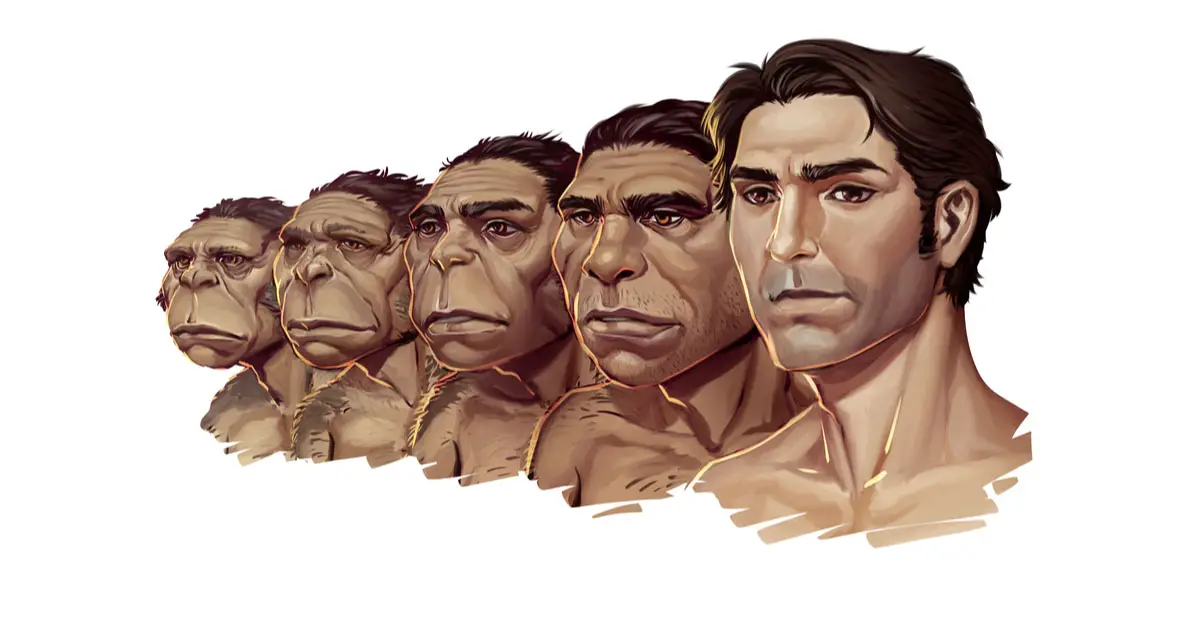As humans, we often consider ourselves the end-product of thousands of years of evolution. This has given us the misguided idea that we are no longer evolving. Scientists, however, know that this is not the case. In fact, humans are evolving at a faster rate now than at any point in the last 250 years.
Of course, evolution occurs over tens of thousands of years, which makes many of these changes go relatively unnoticed to the untrained eye. That being said, if humans are continuing to evolve, does this mean that our species will look different thousands of years in the future?
Most scientists agree that this will be true, but exactly what we will look like is up for debate. Several years ago, a scientist and an artist got together to make some predictions, and the results are interesting to say the least.
Evolution of the Human Face in 100 Thousand Years
In 2007, artist and researcher Nickolay Lamm partnered with computational geneticist Dr. Alan Kwan and came up with three illustrations. He first hypothesized what we might look like in twenty thousand years, the second in sixty thousand years, and the third 100 thousand years into the future.
According to Lamm, this is “one possible timeline” that takes into consideration both human evolution and advancements in technology and genetic engineering. Lamm and Kwan imagined a possible future where humans would have a much greater ability to control the human genome, and where their living environments might be much different than ours [1].
Here are some of the major changes that could happen, and the reasons why they might occur, according to Kwan and Lamm:
A larger forehead
The human forehead has been increasing in size since the fourteenth and fifteenth centuries. According to scientists, when you measure skulls from that time and compare them to our own, people today have less prominent facial features and higher foreheads [2]. It seems logical, then, to imagine a future where our skulls continue to grow to accommodate larger and larger brains.
Changed Facial Features
Given the advancements we have already made in genetic engineering, Kwan based some of his hypotheses on the assumption that we will be even further ahead sixty thousand years from now. He argued that a greater ability to control the human genome will mean that evolution will have little effect on human facial features. Essentially, our faces will change depending on human preferences- like larger eyes, a straighter nose, and more symmetry between both sides of our faces.
He also suggested that by then, it is possible that humans will have begun colonizing other planets. People living in places that are further from the sun, and therefore are less bright, may cause their eyes to get bigger to enhance vision. Skin may also be darker to lessen the damage from UV rays outside of earth’s protective atmosphere.
Additionally, he proposed that people will have thicker eyelids, and their frontal bone under their brow will be more pronounced. This will help humans to deal with the disruptive effects of cosmic rays. We already see these effects happening with today’s astronauts.
Kwan says that over the remaining forty thousand years, those features that humans selected for will become even more pronounced. One hundred thousand years from now, it is possible that humans’ eyes, for example, will seem unnervingly large compared to what we are used to today.
Functional Necessities
Other, smaller changes may be things like larger nostrils. This will allow humans to breathe easier when they’re living on other planets. People may have denser hair to keep their larger heads warm. In an age, however, when you can genetically alter almost any feature about yourself, Kwan suggests that features make us look naturally human will become more favorable.
“[That] will be ever more important to us in an age where we have the ability to determine any feature,” he said [1].
This will influence the way we use wearable technology. Discrete implants that look naturally human will replace the Google glass and iWatch. We may have devices like communication contact lenses, embedded nano chips, or any number of almost unimaginable technology.
Essentially, people will want to be wirelessly plugged in, with “perfect”, natural-looking human faces. What will be natural to these future humans, however, might look utterly strange to us.
Disagreement in the World of Genetics
After Kwan and Lamm released their artistic renderings of possible future humans, there was a bit of an uproar among geneticists. Mathew Harper, who was a writer for Forbes at the time, argued that Kwan and Lamm were not talking about evolution. Instead, they were talking about genetic engineering. According to Harper, Kwan didn’t even do that very well.
“He’s doing so somewhat naively, predicting that the only changes that will happen will be an enlarged braincase and enlarged eyes so we can use the computerized contact lenses that will apparently replace Google Glass,” he said [3].
Harper also pointed out that in terms of evolution, one hundred thousand years is actually a relatively short amount of time. For this reason, he argued that the physical differences in humans will be significantly less pronounced.
Additionally, he pointed out that our brains appear to be shrinking, not growing.
Finally, Harper asserted that the technology to change minor aspects of our appearance is to far away. Far enough, anyways, that it is impossible to think about it intelligently. He spoke with a number of geneticists, and came to one conclusion: Kwan and Lamm’s hypothesis is less science and more science fiction.
Kwan’s Response
Kwan responded to Harper’s criticism, saying that his work was merely speculation that was misrepresented as predictions. He also pointed out that he frequently used the word “might” in his research. Essentially, he was saying that there’s a good chance he could be entirely wrong.
“The operative word “might” makes the statement an existential statement, which means that there is a non-zero possibility that a given event may occur. Given that we agree that no one can make an absolute statement about the future, by the same token, you cannot claim to know the negation of an existential statement, which is itself an absolute statement such as “this is not how a face might look like…” or its equivalent “there is no chance the human face will look like this….,” he said [3]
That is essentially a very long-winded way of saying no one can definitively say his guesses are right, including himself. It also means, however, that no one can definitively say they are wrong, either. Why? Because no matter how hard we try, we cannot predict the future. At least, we can’t do so with one hundred percent accuracy.
So what will humans look like one hundred thousand years from now? Will the changes be because of evolution, or genetic engineering?
Maybe they’ll look like Kwan and Lamm’s pictures. Or maybe they’ll look entirely different. The reality is, we won’t know until we get there.
Read next: Incredibly Rare Footage Shows The Last Survivor Of Isolated Amazonian Tribe
References
- “How The Human Face Might Look In 100,000 Years.” Forbes. Parmy Olson. July 7, 2013.
- “Time changes modern human’s face.” BBC. Rebecca Morelle. January 25, 2006.
- “No, This Is Not How The Human Face Might Look In 100,000 Years.” Forbes. Matthew Herper. June 7, 2013.

